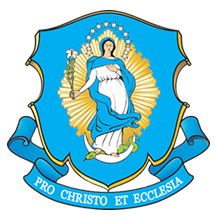
Pope Benedict XVI encouraged us to be like St. Hildegard by using our individual God-given gifts to make a “valuable contribution to the spiritual development of our communities and of the Church in our time.”
By Kimberly Bruce
She is one of only four female Doctors of the Church. She was a mystic from the age of 3 who grew into an abbess, author, composer, preacher, and advisor. We are talking about St. Hildegard of Bingen (feast day Sept. 17) who, with Sts. Catherine of Siena, Teresa of Avila, and Thérèse of Lisieux, make up the current list of female Church Doctors.
Educated woman of the Middle Ages
Born in 1098 in Bermersheim, Rhineland in Germany, St. Hildegard suffered poor health from childhood. When she was 8, she was given to the care of Blessed Jutta of Spanheim at the Benedictine Monastery of St. Disibodenberg. She became a nun at 18 and was chosen abbess 20 years later. As women novices kept flocking to their monastery, Hildegard opened an additional monastery in Bingen shortly thereafter.
A unique individual, St. Hildegard began receiving mystical visions at the young age of 3. These visions caused her to see human beings as “living sparks” of God’s love. By the time she was 40, an interior command told her to write about her visions. As any good holy mystic would, she sought the advice of the spiritually wise, including St. Bernard of Clairvaux, to help her discern the nature of these visions (whether they were of God or came from herself).
Saint Bernard encouraged St. Hildegard, calming her fears. A text of her dictated words was then presented to Pope Eugene III by Archbishop Henry of Mainz, who believed her visions were from God. In 1147, the Pope authorized St. Hildegard to write her visions down and to speak publicly (an extraordinarily rare permission for a woman, even a woman religious, in the Middle Ages).
Documenting her visions in her book Scivias (short for “Scito vias Domini,” meaning “Know the ways of the Lord”) took the Abbess 10 years to complete. She wrote other books, as well, including shorter works concerning medicine and physiology, and penned more than 300 letters to those seeking her advice.
Speaking truth to power
Saint Hildegard’s life was not without its share of hardships. She continued to suffer from ill health, worsened by her frequent travels preaching about God. Courageous in spirit, she called out Emperor Frederic Barbarossa for supporting several anti-popes against legitimate Pope Alexander III, telling the Emperor that he, too, was subject to God’s judgement.
Toward the end of her life, she suffered a great trial. After allowing a young man who had been excommunicated to be buried at a cemetery adjoining her convent, her ecclesiastical superiors ordered his body removed. The saint refused, knowing the man had received the Church’s Sacraments before death and, therefore, could be assumed to have been reconciled to the Church. The local bishop forbade the celebration or reception of the Eucharist at her monastery.
After much communication between St. Hildegard and Church authorities, the sanction was finally removed shortly before her death in 1179.
A Eucharistic saint
One of St. Hildegard’s visions in Scivias describes what she witnessed at Mass during the reception of Holy Communion:
As other people approached the priest to receive the sacrament, I noticed five modes of being in them. For some were bright of body and fiery of soul, and others seemed pale of body and shadowed of soul; some were hairy of body and seemed dirty in soul, because it was pervaded with unclean human pollution; others were surrounded in body by sharp thorns and leprous of soul; and others appeared bloody of body and foul as a decayed corpse in soul. And all these received the same sacraments; and as they did, some were bathed in fiery brilliance, but the others were overshadowed by a dark cloud ...
When Jesus Christ, the true Son of God, hung on the tree of His Passion, the Church, joined to Him in the secret mysteries of Heaven, was dowered with His crimson blood; as she herself shows when she often approaches the altar and reclaims her wedding gift, carefully noting with what degree of devotion her children receive it when they come to the divine mysteries.
Pope Benedict XVI encouraged us, in his general audience of Sept. 8, 2010, to be like St. Hildegard by using our individual God-given gifts to make a “valuable contribution to the spiritual development of our communities and of the Church in our time.”
On Oct. 7, 2012, the feast of the Holy Rosary, the pope named her, along with St. John of Avila, a Doctor of the Church, praising St. Hildegard as "an authentic teacher of theology and a profound scholar of natural science and music."
Saint Hildegard, Doctor of the Church, pray for us!
{shopmercy-ad}
















